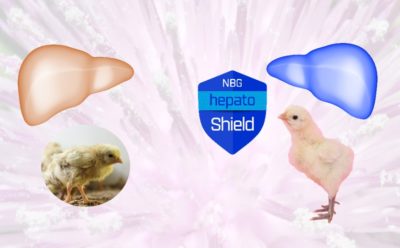Hepatoprotective effect of Silymarin and NBG HepatoShield

Dear colleagues,
This week we wanted to talk to you about Silymarin’s hepatoprotective mechanism against lipid peroxidation, demonstrated by its ability to reduce serum levels of ALP and AST enzymes.
Several studies have also demonstrated Silymarin’s ability to reduce, at the histological level, liver lesions characterised by hepatocellular degeneration around the portal vein, inflammatory cell aggregation, granulomatosis, cytolytic necrosis, periportal fibrosis and sinusoidal dilatation. In addition, silymarin appears to increase the expression of hepatic CAT, GPx, and Mn-SOD genes, which express key antioxidant enzymes that are essential for hepatic detoxification processes.
We remind you that silymarin is an extract of milk thistle rich in various hepatoprotective and antioxidant molecules such as silibin A and B.
In our case, we have created NBG HepatoShield, which is an enhanced source of silymarin. This has been made possible thanks to the exclusive HHH System, which includes NBG BioBoost enhancement technology, which also makes it possible to achieve a very competitive cost-effectiveness ratio.
You can obtain further information about NBG BioBoost technology by contacting us:
NBG HepatoShield has been shown to effectively neutralise the hepatotoxic effects of mycotoxins when added to chicken feed, but it has also been shown to act as a growth promoter for animals under standard conditions, achieving ROIs >6!
Finally, we have attached a very interesting article that evaluates the hepatoprotective mechanism of a source of silymarin. Although in this case the silymarin is not enhanced, a certain hepatoprotective effect can also be observed when animals are challenged with another type of hepatotoxin, specifically CCl4 (carbon tetrachloride).
Disfruten del artículo.

